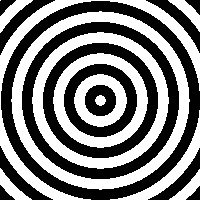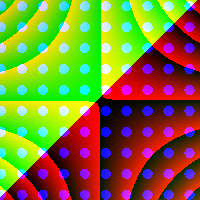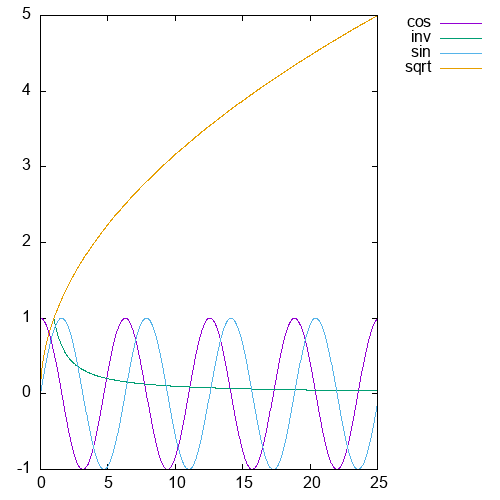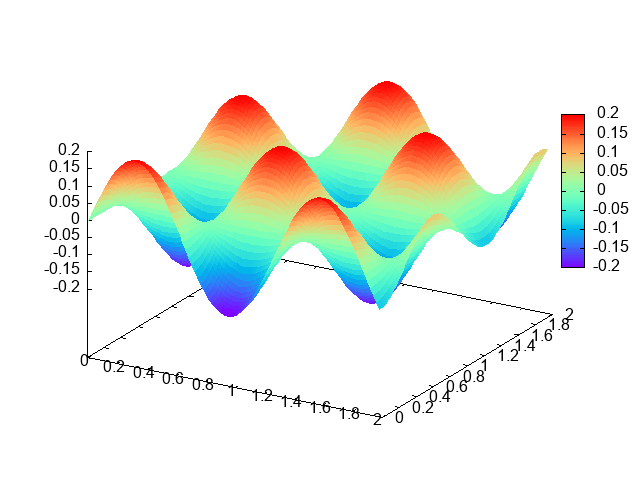Basic use of literate Futhark
The futhark literate command translates Futhark programs to
Markdown files. Specially formatted comments, called directives,
are replaced with executing parts of the program. The purpose of
literate Futhark is to write small example
programs with quick visualisations and such.
For example, let us define a function for generating a linearly spaced vector:
def linspace (n: i64) (start: f64) (end: f64) : [n]f64 =
tabulate n (\i -> start + f64.i64 i * ((end-start)/f64.i64 n))With an evaluation directive, we can show what it evaluates to:
> linspace 10i64 0f64 10f64[0.0f64, 1.0f64, 2.0f64, 3.0f64, 4.0f64, 5.0f64, 6.0f64, 7.0f64, 8.0f64, 9.0f64]> linspace 10i64 5f64 10f64[5.0f64, 5.5f64, 6.0f64, 6.5f64, 7.0f64, 7.5f64, 8.0f64, 8.5f64, 9.0f64, 9.5f64]If you look at the source file, you’ll see
that that the results are not part of what I wrote. Those are
automatically inserted by futhark literate.
The expressions in the directives are not full Futhark expressions. Rather, they are written in a tiny subset called FutharkScript, which supports little besides calling top-level functions in the literate file. An important restriction is that all numeric literals must have a type suffix, as above. When we write literate files, we must put all nontrivial code in ordinary Futhark definitions, which support the full language. The Futhark part of a a literate Futhark program is compiled like an ordinary Futhark program.
Some values are boring when viewed as arrays of numbers.
def linspace_2d n start end : [n][n](f64,f64) =
map (\x -> map (\y -> (x,y)) (linspace n start end))
(linspace n start end)
def spirals n v : [n][n]f64 =
let f (x, y) =
f64.sgn (f64.cos (f64.sqrt (x**2+y**2)))
in map (map f) (linspace_2d n (-v) v)For expressions with an appropriate type, futhark literate can
convert them to an image:
> :img spirals 200i64 30f64
Two-dimensional arrays of floats are interpreted as greyscale. A two-dimensional array of 32-bit integers is interpreted in RGB format.
def colours n v : [n][n]u32 =
let f (x, y) =
(u32.f64 (x*y) & 0xFF) << 16 |
(u32.f64 (x+y) & 0xFF) << 8 |
(u32.f64 (f64.cos x-f64.sin y) & 0xFF)
in map (map f) (linspace_2d n (-v) v)This is more colourful.
> :img colours 200i64 30f64
Using the :img directive, we can draw whatever we want.
However, if we just want to plot the value of some function, it
would be pretty awkward to implement graphing every time.
def xys f n start end : ([n]f64, [n]f64) =
unzip (map (\x -> (x, f x)) (linspace n start end))
def plot_sqrt = xys f64.sqrt
def plot_sin = xys f64.sin
def plot_cos = xys f64.cos
def plot_inv = xys (1/)The :plot2d directive lets us to a quick plot of pairs of x and
y value arrays.
> :plot2d plot_sqrt 1000i64 0f64 100f64
And if we want multiple plots in the same graph, then we pass a record of such pairs.
> :plot2d {sqrt=plot_sqrt 1000i64 0f64 25f64,
sin=plot_sin 1000i64 0f64 25f64,
cos=plot_cos 1000i64 0f64 25f64,
inv=plot_inv 1000i64 1f64 25f64}
The :plot2d directive shells out to
Gnuplot. For advanced needs, such as
3D plotting, we can write the Gnuplot commands ourselves.
def plot3d n start end : ([]f64, []f64, []f64) =
let f (x, y) =
let z = f64.sin(5*x) *f64.cos(5*y)/5
in (x, y, z)
in unzip3 (flatten (map (map f) (linspace_2d n start end)))We pass in the data as a a record, and each field becomes a Gnuplot variable that contains the name of a data file.
> :gnuplot {ourdata=plot3d 100i64 0f64 2f64};
set palette rgbformulae 33,13,10
set dgrid3d 100,100
splot ourdata u 1:2:3 with pm3d notitle